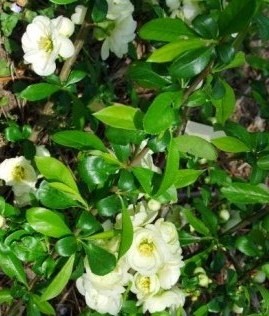Salix serpyllum
(Salix serpyllum)

Description
Salix hylematica is aspeciesofwillowin the Salicaceae, native to the Himalayas, offered as an ornamental plant in garden centres. The species closely resembles S. lindleyana and S. serpyllum, species closely related to or even synonymous with S. fruticulosa. These three species are similar in foliage and habitat but differ markedly in the size and position of their catkins: S. lindleyana being almost globose, having only a few flowers (often less than five) while the catkins of the other species are cylindrical, with up to twenty flowers, the female catkin growing considerably longer at maturity. An Award of Merit was given to S. hylematica in 1982. This plant was presumably S. serpyllum or S. fruticulosa. Salix hylematica, an alpine creeping willow thrives in rock gardens and often turns red in color in the fall. This shrub can only reach a height of 2 to 4 centimeters. The leaves are shiny, green and covered with down on the underside. Curiously, when they change color, from green to yellow and red, they emit a smell of honey. At the end of winter, a number of twigs seem dead but are covered in the following season with reddish buds. The species grows in high mountains, between 3000 and 4000 m, in moist but well-drained soil. The willow genus or willow genus (Salix) is a genus in the willow family, and grows as trees, shrubs, rice or herbaceous dwarf shrubs. The trees in the genus are usually called willow trees, while the more shrub-like species are usually called willow. Otherwise, arrows are usually called the species that have flowering and leaf splitting at the same time, while species that bloom on bare twigs are called willow. The genus has over 400 species. The grayish bark of the wood is smooth or rough and with a wood that often has ridges under the bark. Its winter buds have a bud scales and the leaves are strewn, simple and notched or finely sawn. The willow is a two-story building with flowers gathered in axillary pendants. Fertilizers of willow species have been found in tertiary strata in Europe, Asia and in Arctic regions, and these older species are often close to now living tropical willow species with many stamens. In older Quaternary deposits, modern northern varieties of willow are beginning to emerge. Traces of willow have been found in Italy and in Europe's pre- and postglacial peat layers of several today alpine and arctic species such as dwarf willow, net willow and polar willow.
Taxonomic tree:







